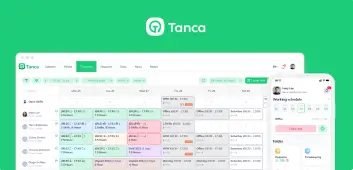A pay stub serves as a crucial record of your earnings, deductions, and net pay for each pay period. It provides transparency into how your compensation is calculated and helps you track your income over time. Familiarity with the components of a pay stub helps HR professionals verify that all necessary information is included and correctly calculated, reducing the risk of legal issues.
What is a Pay Stub?
A pay stub, also known as a paycheck stub, wage slip, or earnings statement, is a detailed document provided by employers to employees that outlines their earnings for a specific pay period. It typically accompanies a paycheck, whether in paper or digital form.
A pay stub includes key details such as employee information, pay period and date, gross pay, deductions (taxes, insurance, retirement), employer contributions, net pay (take-home pay), year-to-date totals, hours worked, paid time off (PTO), and taxable wages.
For HR professionals, understanding pay stubs is crucial for explaining employee compensation and ensuring compliance with labor laws.
Who needs a Pay Stub?
Pay stubs are essential documents for various individuals, serving important purposes in the financial and employment landscape.
- Employees primarily need pay stubs to verify that their earnings and deductions are accurate, ensuring they understand their tax withholdings for effective tax filing.
- For employers, providing pay stubs is crucial for maintaining legal records of employee compensation as required by the Fair Labor Standards Act (FLSA) and for documenting payroll details for each employee.
- Self-employed individuals, such as sole proprietors or small business owners, can create pay stubs for themselves to serve as a record of their income and expenses, which is vital for financial management and accurate tax reporting.
- Independent contractors utilize pay stubs to track their income and expenses for tax purposes and to prove their income to clients or potential clients when required by contract.
Each of these groups relies on pay stubs to ensure transparency, compliance, and effective financial management in their respective roles.
What details are included on a pay stub?
A pay stub is an essential document that provides a detailed overview of an employee's earnings, deductions, and contributions for a specific pay period. Here are the key details typically included, along with their significance for HR professionals:
Employee Information
- Name
- Address
- Employee ID
- Pay Period and Date: Specifies the start and end dates for the period of work being compensated, such as biweekly or monthly. The date the pay stub is generated, which is important for record-keeping and for employees to track payment timelines.
Gross Pay
Represents the total earnings before any deductions are applied. This includes:
- Base Salary: The standard pay rate for salaried employees.
- Hourly Wages: Total hours worked multiplied by the hourly rate for hourly employees.
- Overtime Pay: Additional pay for hours worked beyond the regular workweek, typically at a higher rate.
- Bonuses and Commissions: Additional earnings awarded based on performance or sales.
Deductions
This section outlines all withholdings from the gross pay, including:
- Taxes: Federal Income Tax, State and Local Taxes
- Social Security and Medicare (FICA)
- Insurance premiums
- Retirement contributions
- Other deductions: Includes union dues, wage garnishments (e.g., child support), and contributions to flexible spending accounts (FSAs) or health savings accounts (HSAs).
- Employer Contributions: Retirement plan contributions, employer matching contributions to retirement accounts, insurance premium contributions.
- Net pay (Take-Home Pay)
- Year-to-Date (YTD) Totals: Gross pay YTD, deductions YTD, net pay YTD
- Hours worked: Regular hours, overtime Hours
- Paid time off (PTO)
- Taxable wages
Pay stub types
The two most common types of pay stubs are physical pay stubs and electronic pay stubs.
Physical Pay Stubs
The most commonly used type of pay stub is the electronic pay stub. With the rise of digital payroll systems, many employers now provide pay stubs electronically through employee portals or payroll software.
Physical pay stubs are printed documents provided to employees along with their paychecks. They contain detailed information about earnings for a specific pay period, including gross pay, deductions, and net pay. Physical pay stubs are beneficial for employees who prefer tangible records they can keep for their files. However, they require secure storage to protect sensitive information and may contribute to paper waste.
Electronic Pay Stubs
Electronic pay stubs are digital versions that employers provide through online payroll systems or employee portals. They offer the same detailed information as physical pay stubs but are accessible anytime and anywhere, making them convenient for employees.
Electronic pay stubs can be easily stored and retrieved without the clutter of paper documents. Additionally, they often come with enhanced security features, reducing the risk of unauthorized access to personal information.
How to Spot a Fake Pay Stub?
Identifying a fake pay stub is crucial for preventing fraud and ensuring accurate financial transactions. Here are key indicators to help you spot a fraudulent pay stub:
- Inconsistent Information: Check for discrepancies in the employee's name, address, or Social Security number. Any inconsistencies with known records can be a red flag.
- Unusual Formatting: Fake pay stubs may have poor formatting or inconsistent fonts. Legitimate pay stubs typically follow a standard layout and design used by the employer.
- Lack of Detail: Authentic pay stubs provide detailed information about gross pay, deductions, and net pay. If a pay stub lacks this detail or is vague, it may be fake.
- Unrealistic Earnings: Compare the reported earnings with industry standards for the employee's position. If the income seems unusually high or low, it could indicate fraud.
- Absence of Employer Information: Legitimate pay stubs include the employer’s name, address, and contact information. A missing or generic employer section can be suspicious.
- Year-to-Date (YTD) Totals: Check if YTD figures are included and make sense in relation to the current pay period. Inconsistencies here can indicate manipulation.
- Verification Options: Always verify employment and income directly with the employer if possible. Legitimate employers should be able to confirm details provided on a pay stub.
- Unusual Payment Methods: Cryptocurrency payments, gift cards, barter systems, Peer-to-Peer payment apps.
Common Errors When Making Check Stubs Online
1. Incorrect Employee Information
One of the most frequent mistakes when creating check stubs online is entering incorrect employee details. This can include inaccuracies in the employee's name, address, or Social Security number. Such errors can lead to significant issues, including tax complications and payroll disputes. It's essential to double-check all personal information against official records to ensure accuracy and prevent any potential legal repercussions.
2. Miscalculating Earnings and Deductions
Another common error involves miscalculating gross pay, overtime, bonuses, or deductions. Employers must ensure they are using the correct rates and formulas when calculating earnings, especially for employees who receive variable pay based on commission or overtime. Failing to accurately account for deductions—such as taxes and benefits—can result in inflated net pay figures that may not reflect what the employee should actually receive. Regular audits of the calculations can help mitigate these risks.
3. Poor Formatting and Lack of Detail
Check stubs must be clear and well-organized to be effective. Poor formatting, such as inconsistent fonts or unclear layouts, can confuse employees about their earnings and deductions. Additionally, failing to include important details like year-to-date totals or specific deduction explanations can hinder employees' understanding of their pay stubs. To enhance clarity, ensure that each section is distinctly labeled and that the overall design is professional and easy to read.
FAQs
Can an employee request a copy of their payroll record?
Yes, employees can request a copy of their payroll records, including pay stubs, under various labor laws. Many states have regulations requiring employers to provide employees with access to their payroll information, ensuring transparency in compensation. The Fair Labor Standards Act (FLSA) does not specifically mandate the provision of pay stubs but does require employers to maintain accurate records of hours worked and wages paid.
When making a request for payroll records, employees should typically submit a formal request to their HR department or payroll administrator. This request can often be made in writing or through an employee portal if available. Employers are encouraged to respond promptly and provide the requested information in a clear and accessible format. Understanding the process for obtaining payroll records helps ensure transparency and fosters trust between employees and management.
Can you make pay stubs for yourself?
Yes, individuals can create pay stubs for themselves, especially if they are self-employed or managing their own payroll. However, it is essential to ensure that these pay stubs are accurate and comply with relevant laws and regulations.
How to find pay stubs?
To find pay stubs, employees can follow several steps depending on their employment situation and the resources available:
1. Check with the HR or Payroll Department: The first step is to contact your Human Resources or payroll department. They can provide copies of your pay stubs, either in physical or electronic format. Many companies maintain records of pay stubs for a certain period, making it easy for employees to obtain them upon request.
2. Employee Portals: If your company has an online employee portal or payroll system, you can log in to access your pay stubs directly. Most modern payroll systems allow employees to view and download their pay stubs for any pay period.
3. Email Records: Some employers send pay stubs via email, especially if they use electronic payroll systems. Check your email for any communications from your employer regarding your pay stubs.
4. Bank Statements: If you are unable to obtain a pay stub directly, reviewing your bank statements can provide insights into your earnings. While this won't replace an official pay stub, it can help you track deposits and verify income.
5. Tax Documents: At the end of the year, tax documents such as W-2 forms (in the U.S.) summarize your earnings and taxes withheld. While not a pay stub, these documents can serve as a record of your income.
Conclusion
In conclusion, understanding what a pay stub is and its significance is crucial for employees in managing their finances effectively. Pay stubs provide a detailed breakdown of earnings, deductions, and net pay, allowing employees to verify their compensation and prepare for tax obligations. With tools like Tanca, HR professionals can streamline the payroll process, ensuring accuracy and compliance while making it easier for employees to access their pay information. Ultimately, being informed about pay stubs empowers employees to take control of their financial well-being and promotes a culture of accountability within the workplace.



